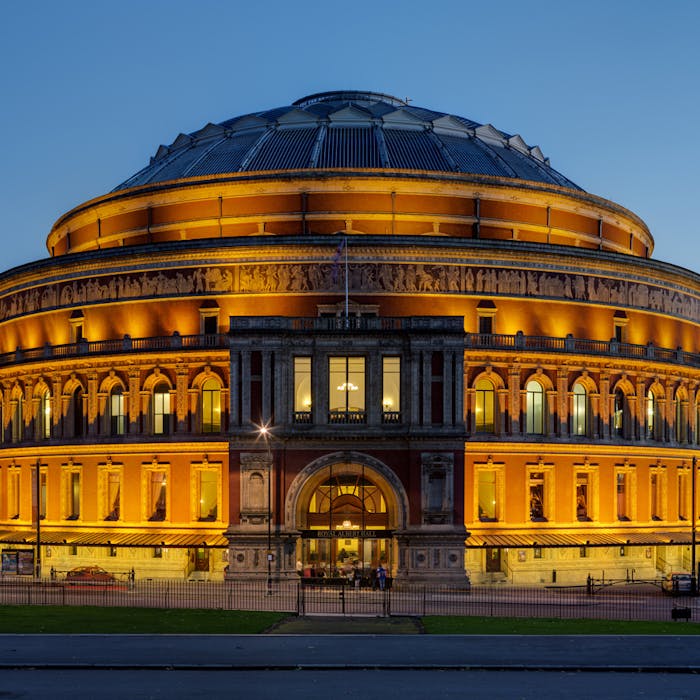
The Royal Albert Hall - 'the nation's village hall'
The Royal Albert Hall in South Kensington, London, opposite Kensington Gardens, opened in 1871 and is arguably Britain's most famous music venue. It was conceived by Prince Albert after the Great Exhibition of 1851 as one of a series of buildings of permanent public benefit.
This huge venue has been called "the nation's village hall". It can seat 5,272 people.
Its charitable status and founding ethos means it functions not just as a venue for top-notch concerts by the great performers of the era, but as a home for all sorts of other festivals and events - some quite quirky, and informal.
Built in brick in the Italianate style of architecture, which was popular in Britain during the 19th century, the hall was technically advanced, being the world’s first domed amphitheatre. The dome is a freestanding structure made of glass and iron, weighing 800 tons. Queen Victoria laid the foundation stone as work commenced in 1867, and named the building after her husband Prince Albert, who had died six years earlier.
The hall was designed by two civil engineers, Francis Fowke and Henry Y.D. Scott of the Royal Engineers, and built by the Lucas Brothers. The designers were influenced by the amphitheatres of Ancient Rome, and designed the hall as an ellipse, with major and minor axes of 83 m (272 ft) and 72 m (236 ft).
Over the years a wide variety of events have been held here - ballets, Miss World competitions, boxing, wrestling, brass band competitions, religious meetings, balls, dinners, car shows, film screenings, conventions and graduation ceremonies.
The hall is best known for its classical concerts - especially the annual BBC Proms, many of which are televised. The arena level is very versatile, and can accommodate seating or an enormous stage. The Royal Albert Hall is also known for its organ, prominently positioned above the stage. It is the second-largest pipe organ in the British Isles with 9,997 pipes in 147 stops.
A quirk of the Hall's initial funding structure is that many of the numerous boxes between the stalls and the circle level of seats are owned by individuals or companies and the seats within cannot be sold by the Box Office. One is owned by the Queen, who has an additional private room beyond it and her own personal staircase. The box is often used by members of the Queen's household.
The Hall has a confusingly large number of exterior entrances, 12 of which are used by the public. Its recent renovation added a huge underground loading bay to accommodate the arrival of equipment and sets for major entertainments and productions such as the Cirque du Soleil, which now has an annual season at the Royal Albert Hall.
Visitors can choose from an array of restaurants and bars, some of which are open throughout the day, and disabled access is quite good for such an old venue, with lifts, ramps and good wheelchair positions in the auditorium.
Further reading
Links to external websites are not maintained by Bite Sized Britain. They are provided to give users access to additional information. Bite Sized Britain is not responsible for the content of these external websites.
